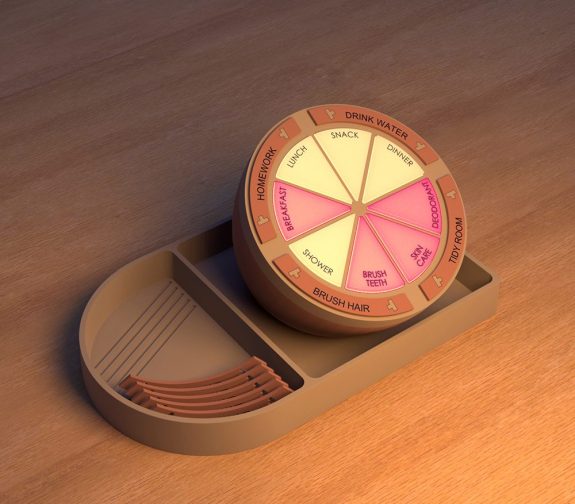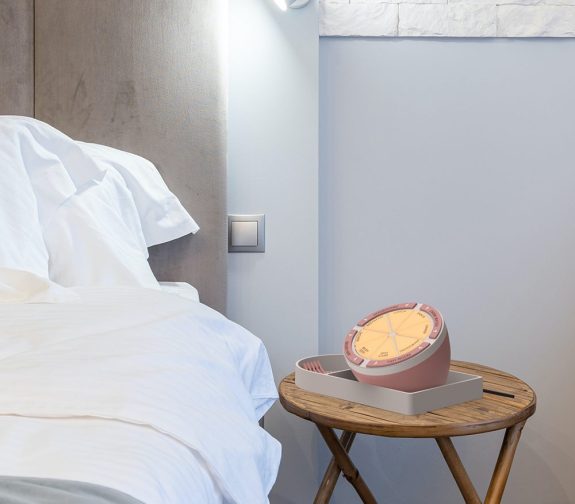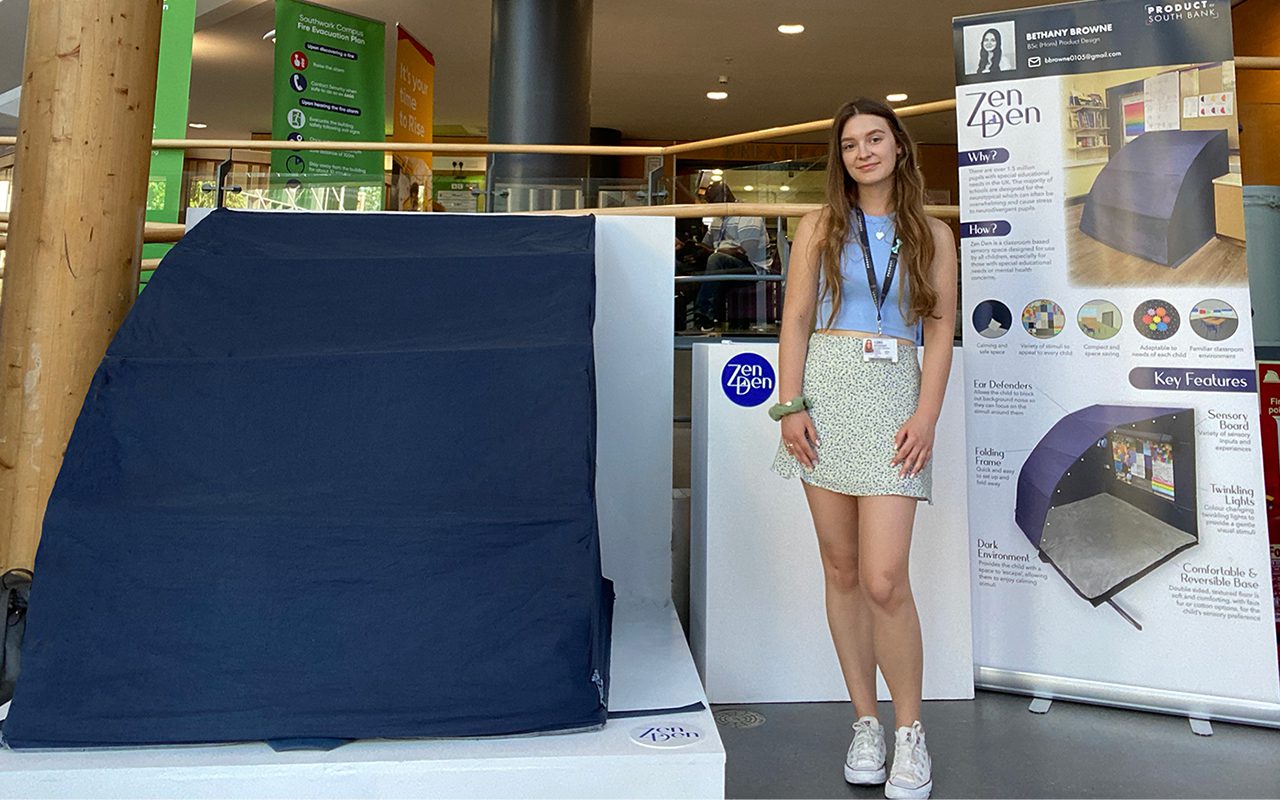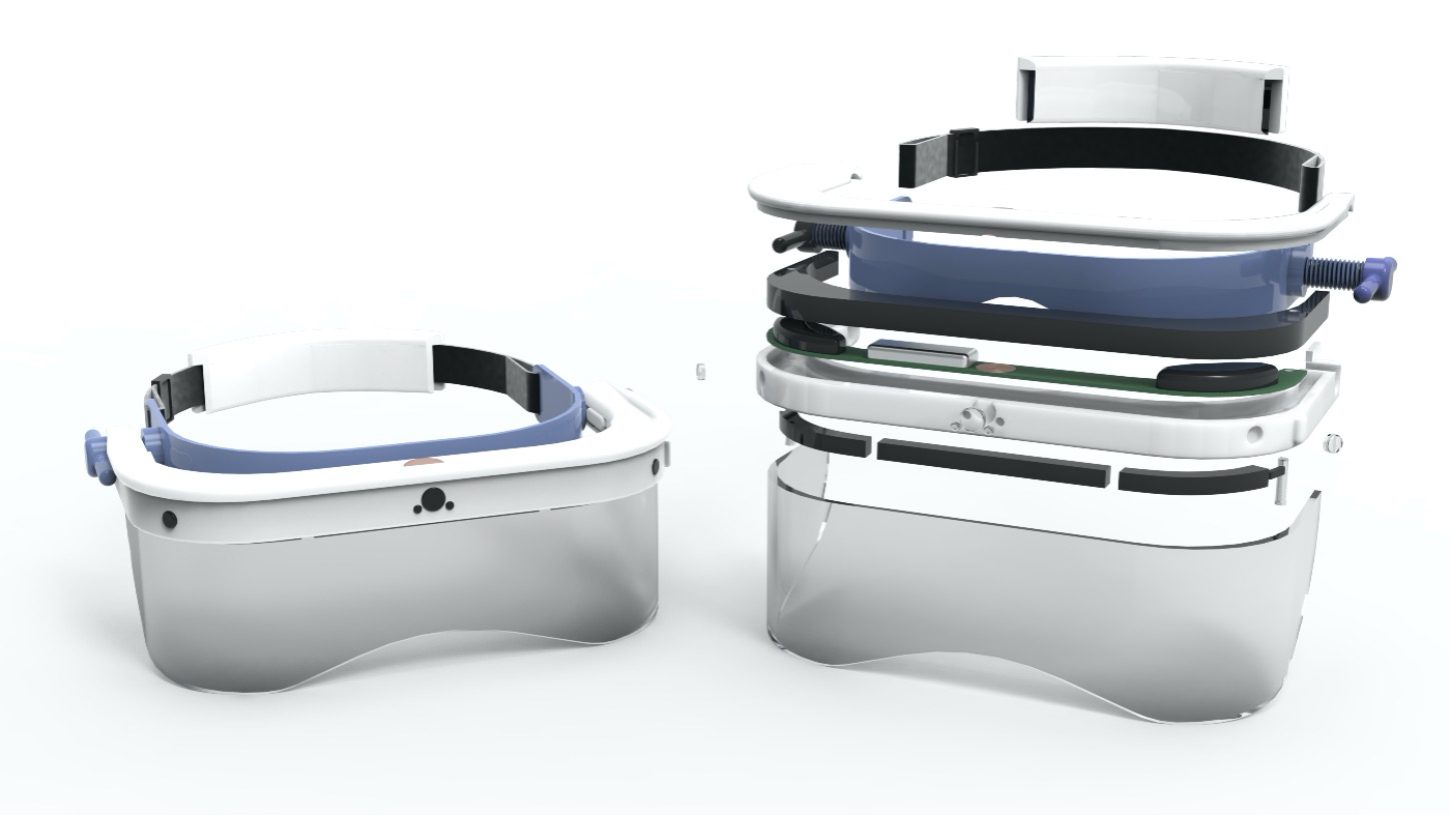Accessibility at New Designers: Neurodiversity & Design
Meet four graduate designers whose work offers important new avenues for understanding and supporting neurodiversity in our every day lives. Presented to the public for the first time at ND23, their work seeks to create accessibility in various spaces from the home to the classroom. Learn about their ground-breaking work below.
Meeco
Geena Nelson
Meeco is a social hub consisting of 6 chairs and an electronic table that helps promote social interaction between children with and without special educational needs and disabilities (SEND) in KS1.
The aim of the product is to enhance and improve the time children spend out of the classroom in mainstream primary schools and create a positive environment for SEND learners. Enabling children to meet their peers in a safe space, engage with one another and build friendships.

Meeco is designed to be highly adaptable, functional, and appealing to the target user group through the use of colour and brightness changing LED lights. The table is multi-use and can be used both for group interventions and 1:1 learning. The product includes controllers which are stored and charged in the chairs. These controllers can be used for interactive games and story time activities where the children can either work individually or as a team to complete a shared goal. The games incorporate sensory features which are important for children with SEND.
To be flexible for a range of seating heights, the chair includes a simple twisting wheel to enable height adjustment so that the children can sit at the correct height. The chairs stack together, each chair charging wirelessly. This allows the set to be fully charged overnight for the next day of learning. The hugging frame and tactile pattern make the chair well suited to a range of neurodiverse and sensory needs.
Habilite: A Routine Organiser Light
Kirsty Depledge
1 in 10 people in the UK have dyspraxia.
For them, time management, organisational skills and common everyday tasks can be much harder. This can be a major cause of frustration and stress in teenagers with the disorder.
Habilite is a bedside light that compartmentalises common routine tasks for the user to plan ahead of time and then fulfil. When the buttons corresponding to each task are pressed, they are lit up in a different colour, symbolising the user’s desired routine for that moment in time. When pressed a second time, that specific task will pulsate, reminding the user to complete that task first before continuing.
Habilite aims to break down routines into smaller segments, making them more achievable, while ensuring it remains an accessible product catered specifically to the needs of individuals with dyspraxia.



ZenDen
ZenDen is a classroom-based sensory space designed to improve the experience of children living with mental health concerns and special education needs as they navigate the sometimes stressful environment of the classroom.
ZenDen provides an enclosed space that offers a variety of stimuli including visual, auditory and tactile, which help the child to regulate their emotions by shifting their focus away from their stress point. The stimuli can be adapted depending on the sensory needs and preferences of the individual.
Many schools have very limited space and funding, therefore they are unable to provide a dedicated sensory room. The ZenDen can be folded flat against the wall when not in use, whilst it is a permanent addition to the room, it doesn’t encroach on the classrooms’ available space. As it is classroom-based, it makes it accessible to all, reduces the stigma around using sensory spaces, as well as keeping the child in the classroom to access their learning.
AuRa Play
Sophie Grace Taylor
AuRa Play is driven by Augmented Reality; its purpose is to engage children with Additional Learning Needs by producing an immersive educational environment.

The device supplies sensory outputs that will stimulate the child’s senses. This supports children with various needs within an educational setting, allowing them to build upon their social, communication and emotional regulation skills, which these children take longer to develop. My research shows how children with these needs are absent from school due to unsatisfactory resources or simply because their needs are not being met, the AuRa Device aims to tackle this issue and provide an aid that current educational resources overlook.

